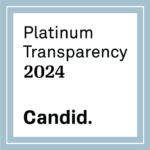Patients living with HIV (PLWH) must take daily medications to suppress the virus, despite significant advancements in antiretroviral therapy (ART).
A major limitation of ART is that it is only effective against an actively replicating virus. Therefore, despite being successful in suppressing HIV RNA, ART cannot inhibit a nonreplicating virus. The latter is a contributing reason why HIV cannot be cured with ART alone. Contemporary efforts for therapy have focused on using the immune system to target HIV.
One strategy being investigated to replace daily ART is to use broadly neutralizing antibodies (bNAbs). These antibodies form naturally during an acute HIV infection but are typically not potent enough to completely eradicate the virus. However, a small subset of PLWH, known as longterm nonprogressors, maintain their CD4 count even without ART. In these patients, bNAbs are part of the immune response that suppresses the virus. The antibodies in development are derived from long-term nonprogressors and target the genetically conserved regions of the HIV envelope, such as the CD4 binding site, gp120, gp120-gp-41 interface, membrane proximal external region, V1V2 apex, or V3 loop. They have numerous proposed mechanisms, including direct elimination of HIV RNA, enhanced HIV-specific CD8+ T-cell activity, and possible reduction of the HIV reservoir.1-3
Like ART, bNAb monotherapy is associated with the development of resistance, so several bNAbs are being studied in combination. Two antibodies that have shown in vivo activity in PLWH are 3BNC117, which targets the CD4 binding site, and 10-1074, which targets the V3 loop. These agents display long half-lives of 9 and 13 days for 3BNC117 and 10-1074, respectively, which make them attractive options to replace daily ART.4,5
Three doses of 30 mg/kg of 3BNC117 and 10-1074 were given every 3 weeks to individuals with undetectable viral loads who stopped ART. Combination bNAb therapy maintained viral suppression for a median of 21 weeks in subjects with bNAb-susceptible HIV.6 In 4 individuals with bNAb-susceptible virus, 3BNC117 and 10-1074 showed a maximal decrease in mean HIV viral load by 112 copies/mL.7 After completion of therapy, 3 subjects developed elevated inhibitory concentrations to 10-1074 consistent with resistance. In clinical studies, adverse events (AEs) were mild; no serious AEs were reported.
Although these results are promising, there are several questions that must be addressed before bNAb therapy can be a mainstay of HIV treatment, including development of treatment-emergent resistance, durability of viral suppression, and optimal bNAb combinations. Longer-acting formulations (NCT04319367), novel bNAb combinations (NCT03831945), and combinations with other therapies (NCT03619278, NCT03719664) are being investigated.
A New Hope for PLWH With Cancer
Although immunotherapy for HIV treatment is still under investigation, immunotherapy use in PLWH with cancer may allay concerns. Clinical trials have historically excluded PLWH because of the fear of unmasking opportunistic infection and interactions with antiretrovirals. Immunotherapy trials also have had to contend with the unknown effects of immunotherapy on T cells and questionable benefits in the setting of potential T-cell insufficiency.8 Recommendations in 2017 from the American Society of Clinical Oncology, the FDA, and Friends of Cancer Research advocate for including PLWH in immunotherapy clinical trials and provide eligibility guidance.9
Generally, case reports and other studies have reported acceptable safety and tolerability to immunotherapy in various malignancies, such as anal, bladder, head, lung, and neck cancers; hepatocarcinoma; Kaposi sarcoma; melanoma; non-Hodgkin lymphoma; and renal cell carcinoma. Therapies have had no impact on the activation of opportunistic infections or HIV disease.10-13 Uses gaining support in PLWH include brentuximab-vedotin and rituximab for lymphoma,14,15 pembrolizumab, nivolumab, ipilimumab, and ipilimumab plus nivolumab for melanoma,16 and pembrolizumab and nivolumab for patients with non-small cell lung cancer (NSCLC).17
As with all therapy, caution is warranted. A Veterans Health Administration case series describes outcomes with nivolumab in 16 PLWH with NSCLC, Hodgkin lymphoma, renal cell carcinoma, and off-label cancers as comparable with that of patients not infected with HIV, but larger studies are needed to confirm the 40% prevalence of immune-related AEs.18
Ongoing immunotherapy studies in HIV-associated cancers include a phase 2 study of nivolumab in advanced NSCLC (NCT03304093), a phase 1 study of pembrolizumab in advanced gastrointestinal cancers (NCT02757391), a phase 1 study of ipilimumab and nivolumab in advanced solid tumors or classic Hodgkin lymphoma (NCT02408861), a phase 2 study of durvalumab in advanced cancer (NCT03094286), a study of pembrolizumab in various relapsed, refractory, and disseminated cancers (NCT02595866), and intralesional nivolumab for patients with Kaposi sarcoma (NCT03316274).19
https://www.pharmacytimes.com/publications/health-system-edition/2020/j…
